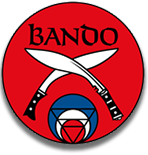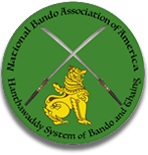The Scorpion combines patience, stealth, and precision as it transforms a hapless rodent or bird into a hearty meal. The prey is easily defeated by a progressive attack that begins with the strategic trapping of limbs and ends with a fatal injection of poison. Scorpion masters in ancient China, Tibet, India and Burma took their lessons directly from nature, reflecting in this unique style of fighting the survival strategy of the deadly scorpion.
Tactically a grappling system, the Scorpion Style is one of the nine “animal” combat methods incorporated in the American Bando Association. Seizing and holding techniques that simulate the hunting patterns of actual scorpions characterize the Scorpion System. Striking methods within this style are designed to produce a “poisonous” effect on the nerves and muscles of humans-again, to simulate the scorpion’s hunting pattern.
The scorpion style in Bando has evolved into a sophisticated combat approach, which combines the scorpions fighting instincts and temperament. Some martial artists might attempt to compare the scorpion style with the better-known praying mantis style practiced in Chinese systems. But, the two styles have very little in common. In reality, the scorpion style is closely linked with two other animal styles in Bando that derive their techniques from poisonous animals – the Cobra and Viper styles. Also, many weapons and techniques found within the Bando Eagle style are closely linked with scorpion approaches.
Scorpion fighting behaviors are imitated by combining human limbs into trapping, pressing and pinching motions. Fingers, knuckles, palms, elbows and knees. Scorpion stylists to gain control in a fight use even the head and chin.
Three types of targets are definite in the scorpion style, with highest priority given to areas where penetrating strikes are most effective. Primary targets are the eyes, throat, and groin. Most often, hand weapons are used against these primary targets, and the goal is to puncture or pinch highly sensitive areas. When primary targets are well protected, the scorpion stylist will attack nerves in the arms, leg and torso to cause pain that can weaken an opponent. Bone, muscle, and skin nerves are likely to be attacked during combat, depending on an opponent’s position. There are even nerves in the hands and feet that can be pinched or struck with disabling results. Whenever possible strikes and pinches will be executed to immobilize weapons or to injure targets that will stop an opponent.
Conditioning methods common to many martial systems are used in the scorpion style. Weight training, aerobic conditioning, stretching and calisthenics are all used to improve performance. There are, however, specific training which enhance the effectiveness of various techniques. Specialized training approaches are used to improve flexibility of the wrists and to increase hand strength for effective grappling and striking. Weights and customized devices are used to enhance wrist motion and strength. Striking drills with coarse sand or gravel are helpful for conditioning fingers and knuckles for the pinching techniques. Also, leather and vinyl targets are used in striking drills to simulate the skin, soft bones and muscles of an opponent. Other training methods involved striking and grabbing bags filled with sand, using various leg and arm techniques.
The Scorpion style is comprehensive and complex, yet the principles are readily obtained from the animal. In the true spirit of Bando, nature serves as a teacher to those martial practitioners who follow the Scorpion.


